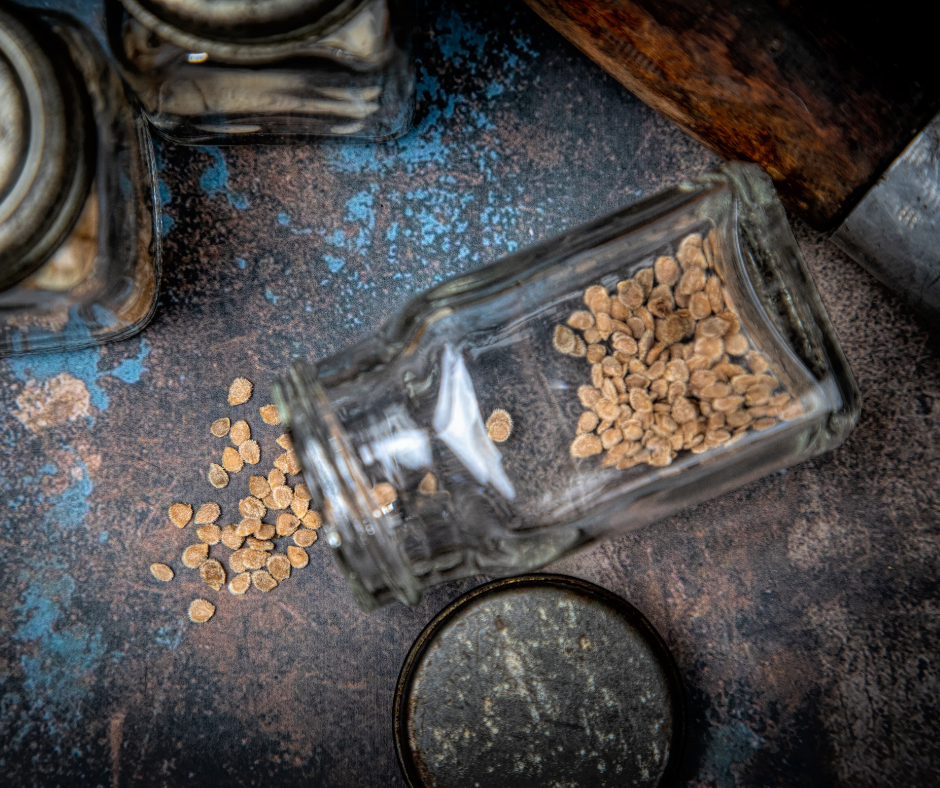The term “heritage” is very sentimental. When we associate something with its heritage, we know it’s valuable. An interesting thing to note is that plants also have a heritage. Plants can survive for ages and evolve according to current world conditions. But some plants retain the same nature and carry the same characteristics throughout life.
There are a variety of heirloom vegetables and fruits. For example, heirloom tomatoes are the most popular heirloom vegetables.
What are heritage or heirloom seeds?

Heritage seeds are obtained from open-pollinated plants. Open-pollinated plants mean that the pollination process happens via Mother Nature. They are also known as heirloom seeds. These seeds pass the same traits from parent to child plant. Heirloom seeds are those grown for more than 50 (or, in some cases, more than 100) years. These seeds are passed from one generation to another owing to their peculiar qualities.

Historical background of heritage seeds
People have different opinions about the history of heirloom seeds. Some believe that these are the seed varieties that came before 1951. While some believe that heirloom seeds date back to the 1920s, some people also think that this variety dates back to when modern industrial agriculture came to be, i.e., right after WW II. This was when farming was popular, and people started harvesting single crops. People began to find it easy to harvest monoculture crops on large farms. Thus, commercialization began from there. Detecting the history of heirloom seeds is more like detective work; you need to check the written work about that species. For example, heirloom tomatoes have a “pre-1800” history.
How are heirlooms different from hybrids and GMOs?
Heirlooms are different from hybrids and GMs. Crosses of heirloom seeds produce hybrids. They are good for growing food varieties in the F1 generation. These seeds don’t produce the same parent plant from which you extracted them.
Genetically modified seeds are defined as seeds whose DNA has been genetically altered in a laboratory by combining the DNA of two plants. They are resistant to herbicides and are not readily available for home gardening. These seeds are used for growing large-scale crops like tomatoes, corn, rice, fruits, etc.
Why grow heirlooms?
Growing heirloom seeds can be a generational project. It is a fascinating, life-long hobby. Seeds from different regions are planted for better taste and quality. After passing from one generation to another, these seeds develop resistance to diseases, extreme weather, and insect tolerance. It requires a little extra care when planting heirloom seeds, but if you properly care for them, it is worth it!

They have a bright past:
Heirloom seeds have a great history with them. The history of the Black Watchman hollyhock is traced back to the Motincello in Thomas Jefferson’s garden (found in the texts of the 1620s). These hollyhocks are grown today, which is owed to the gardeners who kept passing these seeds from generation to generation. It means you have a remarkable plant with an interesting story in your garden.
Heirlooms have passed the test of time.
These seeds are time-tested. After strict quality checks, gardeners passed these seeds from one generation to another. If they cared enough to pass these seeds on, it means there is something special about them. These seeds are resistant to diseases, have a delicious taste, and look vibrant because of their color, size, and shape. Arkansas Traveler is an exceptional tomato variety known for its delightful taste and resistance to weather extremes and humidity.
You can save heirloom seeds every year.
Heirloom seeds come from open-pollinated plants. These plants pollinate with the help of mother nature. Pollination happens through insects, birds, or the breeze. The seeds obtained from these plants will produce plants identical to their parent plants. Seeds can be saved and grown next year to get the same quality plant.
Heirlooms are non-GMO.
Heirloom seeds are essentially non-GM seeds. GM seeds are altered in laboratories. They have foreign DNA injected into their DNA to achieve certain qualities. For example, some corn species are injected with the DNA of bacteria to develop resistance against pests.
Heirloom Seeds are Organic
Heirloom seeds are more often organic. However, there are synthetic varieties of them available. Organic seeds are produced without using artificial fertilizers or pesticides. They are raised according to organic standards and in organic soil.
Conclusion
In light of the above discussion, we can safely say that growing heirloom seeds helps maintain our planet’s biodiversity. You can grow crops that have been time-tested, have a delicious taste, are appealing to the eyes because of their exceptional beauty, and have strong resistance to certain diseases.
Collecting your heirloom seeds can take years of planning. If you want instant access to these seeds, you can get them from the gardeners who are still growing some of the family heirlooms.

